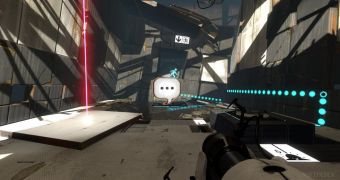Valve is a different type of game company as opposed to ones like Activision or EA, and this is clear in last week's Portal 2, which, besides the regular single-player campaign and its all-new cooperative mode, allows you go through the story with developer commentary.
This isn't something new, as Valve did the same with things like the Lost Coast DLC for Half Life 2, which allowed gamers access to unique insight on how the game took shape and how many of its environments were carefully tweaked so that players behaved in a certain way.
While the developer commentary in Portal 2 isn't as technical as the one from Half Life 2, Valve still manages to share with gamers details about how the game took shape and how many of the decisions that affected its single-player story were the result of many trial and error approaches.
You can find out that Wheatley, the robot companion that helps you in the beginning of the game, was initially set to be a collection of multiple personality spheres that would be introduced throughout the campaign, but the idea was scrapped because it didn't allow gamers the chance to really grow attached to them.
Also, the decision to actually continue with Chell, the heroine of the first game, and GLaDOS, the antagonist, wasn't Valve's original plan, but, due to the concerns of fans and the actual game testers, it decided that it would be best to bring back the popular characters.
Through some of the commentary, you can even see how much testing was done in order to make sure that new features like the aerial faith plates, lasers or the different types of gels, were easy to understand and behaved in such a way that players wouldn't be confused.
Making games is a serious endeavor and, through things like the developer commentary mode in Portal 2, players can get a glimpse of how their gameplay experience actually took shape.

 14 DAY TRIAL //
14 DAY TRIAL //